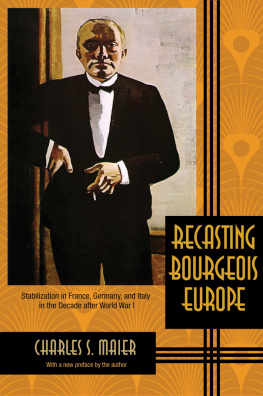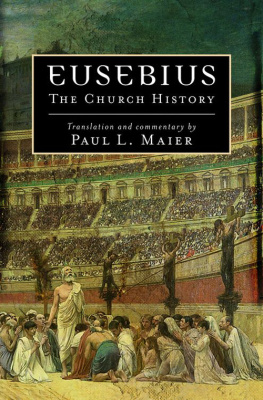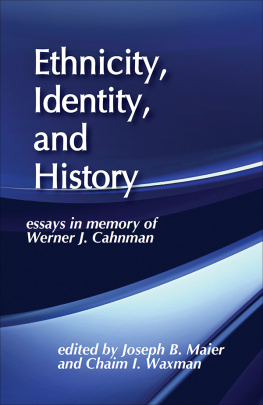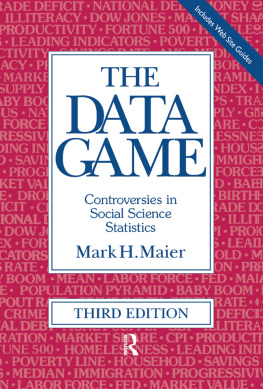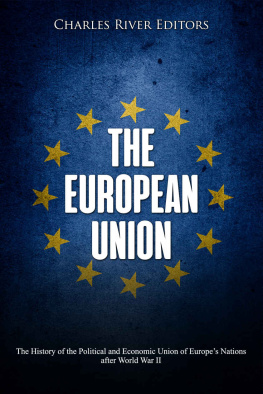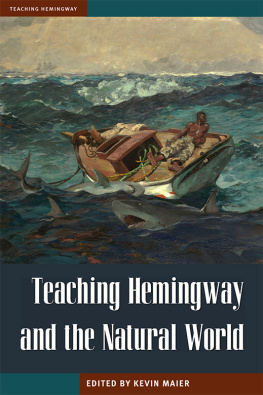
RECASTING BOURGEOIS EUROPE
RECASTING BOURGEOIS EUROPE
STABILIZATION IN FRANCE, GERMANY, AND ITALY IN THE DECADE AFTER WORLD WAR I
WITH A NEW PREFACE
CHARLES S. MAIER
PRINCETON UNIVERSITY PRESS
Copyright 1975 Princeton University Press
Preface to the 1988 reprinting copyright 1988 by Princeton University Press
Preface to the 2016 reprinting copyright 2016 by Princeton University Press
Published by Princeton University Press, 41 William Street,
Princeton, New Jersey 08540
In the United Kingdom: Princeton University Press,
6 Oxford Street, Woodstock, Oxfordshire OX20 1TW
All Rights Reserved
Publication of this book has been aided by a grant from The Andrew W. Mellon Foundation
Fourth paperback printing, and first paperback reprinting with a new preface by the author, 2016
Paperback ISBN: 978-0-691-16979-8
LIBRARY OF CONGRESS CATALOGING IN PUBLICATION DATA
Maier, Charles S
Recasting bourgeois Europe.
Bibliography: p.
Includes index.
1. EuropePolitics1918-1945. 2. EuropeEconomic conditions1918-1945. I. Title.
D727.M236 1975 320.94051 73-2488
ISBN 0-691-05220-4
ISBN 0-691-10025-X (pbk.)
This book has been composed in Linotron Caledonia
Printed on acid-free paper.
Printed in the United States of America
10 9 8 7 6 5 4 3 2 1
To my parents
CONTENTS
PREFACE TO THE 2015 REPRINTING
The republication of Recasting Bourgeois Europe, and perhaps of any work of history after forty years, calls for some sustained self-reflection. What should be the claim on todays possible readers after so long an interval? The documentary record continues to advance; recent scholarship must modify findings; alternative interpretations claim consideration and often revision. Historical studies, however, can retain values that do not depend on the state of knowledge at the point they are written. Recasting sought to assert a continuing claim by virtue of its ambition to compare three national experiences in a crowded and fraught era that often surprised by unexpected outcomes. It challenged the still prevailing historicist notion, which was then the basis of professional graduate training, that national uniqueness and difference trumped any shared attributes in accounting for what actually happened. Without abandoning a narrative format, it pursued lines of research and argument that had previously been neglected and tackled the recurrent issue of how large national societies riven by tensions achieve political settlements.
Like all works of history, Recasting Bourgeois Europe reflected the issues of its time. In the preface to the 1988 reprinting I explained how the developments of the 1970s, a decade of inflation and state-supervised political bargaining between representatives of organized labor and business, had shaped my understanding of the model of corporatist stabilization that I ascribed to the 1920s. In fact, Recasting had a longer evolution and began as a dissertation project during the academic year 196364, when I was concerned less with parallel trends in the contemporary world than with the challenge of how to undertake focused comparative history. It was submitted in 1967 as a more limited study that described how the countries in question got beyond the immediate post-World War I turbulence. Only as I extended the work forward in time (and into book form) over the next seven years did I develop the explanatory framework that appeared in print. The formation of young scholars today does not usually allow such an extended labor without professional catastrophe.
It is appropriate in 2015 to address two new questions. The first is the obvious one: how might I revise my scholarly approach if I were researching and writing the book today? Such a reworking would involve more than just bringing research up to date with new archival findings or the results of new scholarship. If my interpretations of the 1920s, proposed in the 1970s, reflected then current developments, what new perspectives might seem compelling in the light of trends since the seventies? Not that I would retract interpretations proposed forty years agothey still make sense to mebut four decades of packed history since the original publication could well mandate an expanded agenda for examining the years after the First World War.
The second new question is one that I have actually been asked quite often in the intervening years: why did I never write a Recasting II for the years after the Second World War? To be sure, the fact that I never produced an equivalent large-scale work reflected a succession of intervening intellectual interests that arose to claim my attention: the origins of the Cold War, controversies over Holocaust historiography and so-called collective memory, the collapse of Communist regimes in Europe, the trajectories of empire, and the evolving nature of state power, among others. All these inquiries were prodded by unfolding contemporary experience as much as by pure historical curiosity.
But evolving interests were not the only deterrent to attempting a large-scale multinational study of the years after World War II. If the objective of a Recasting II were to parallel the firstthat is, if it were to seek some unifying conceptual basis to account for post-1945 political outcomesthe interpretive key was elusive. The concept of bourgeois Europe no longer made sense. After World War I, bourgeois served to describe the rallying of anti-collectivist forces; it was a term used at the time to describe the opposition to Social Democrats as well as to Marxists further left. But after World War II, the corresponding centrist coalitions depended on social-democratic participation to oppose what they identified as a Communist threat. The notion of bourgeois also conjured up a view of a hierarchical order with a social elite that the Second World War seemed to have decisively broadened. Yes, there were and there remain other familiar concepts available to serve as an overarching theme, most notably the impact of the Cold War or progress toward European integration. These stories, though, have been well told many times. Although I worked on many aspects of Cold War politics and political economy, I did not believe I could justify a new synthesis on that basis. The theme of collective memoryof fascism, or of the Left-Right divisions of the 1930s and 1940s, or of the Holocausthas also served, most notably perhaps in the late Tony Judts impressive narrative, Postwar. But to focus on Europes collective memory did not seem to allow enough emphasis on the act of simply leaving the past behind, that is, just to say moving on, which also made a significant contribution to postwar reconstruction. Still, despite all the difficulties of identifying an adequate unifying trend, perhaps it is time to address the problem again.
Return briefly to the first question posed above: how would I tackle Recasting Bourgeois Europe if rewriting from our current vantage point? Although tracking three national experiences was daunting enough, I might today actually extend the geospatial arguments of the work. This would not be a question of adding another country or two, but of examining the global or extra-European dimensions of the processes underway. As the title was meant to suggest, Recasting focused on issues of economic and sociopolitical confrontation within each of its countries. Although it followed the domestic ramifications of the post-1918 reparations issue, it gave no attention to the role of the colonial worldimportant for France and Britain and soon after for Italy, if no longer for post-1919 Germany. It did not follow the ambitious efforts of the League of Nations, not only to construct an international order, but to intervene in the social and economic domain. Today I would revisit those issues. The renewed historiography of the Leagueits role in social and economic governance, in serving as a forum for minority discontents, in setting at least discursive limits on colonial exploitationsuggests that it was the focus of a global effort at stabilization that I might profitably have placed alongside the dimensions of class compromise and American capital. The international ambitions of the Fascist regime probably merited a closer look as well. West European stabilization never rested on European factors alone. Nor did it rest just on the new active role of the United States in financing West European international payments after World War II, which I compared with the shakier effort in the 1920s in an essay that followed the book.
Next page
